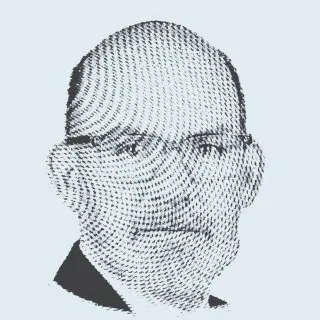When a child grows up and is sent to school, he becomes in need of a good teacher, not the good nurse who had assisted in his birth.
That is the analogy Arthur Schopenhauer drew to argue that Europe had outgrown Christianity and the need for it.
The problem with the Iranian regime, and similar regimes clinging to survival despite everything, is that although the "child" has now reached the age of 45, the nurse continues to tend to him.
After reflecting a little on the recent accident that claimed the lives of Ebrahim Raisi, Hossein Amir Abdollahian, and their companions, the repercussions of leaving the "child" in the nurse’s care become evident. It is not hyperbolic to assert that the announcement of the deaths of these leaders announced many other deaths that had been portrayed as signs of life and vitality. The second death, whose announcement is being pillowed by silence and opacity, is tied to the regime’s political facade, and by extension, the Iranian conception of elections that created this facade.
Indeed, with or without the President and the Foreign Minister, everything proceeds normally, as real power is firmly in the grip of the Supreme Leader Ali Khamenei and the IRGC. This renders much of the current analysis we have seen about potential changes to Tehran's policy futile speculation. As for analysts less prone to futile exercises, they focused on the real issue: the race to succeed the Supreme Leader, that is the heart of the matter.
The second death that has been announced is also tied to Iran’s civilian scientific technology, and it comes after efforts to hide its wretched state behind Iran’s relatively advanced military technology. Iran can call its science “resistance” science, thereby overcoming (as it has a habit of doing) its absence rhetorically and turning this absence into a virtue. However, the truth is that, with or without resistance, the country seemed frail and decrepit, much like the Soviet Union during the last few years of Leonid Brezhnev’s time in power, which was followed by the Chernobyl blast that exposed just how far behind the USSR had fallen scientifically and technologically. Under Mikhail Gorbachev, it became evident that hitting the structure once with a pickaxe sufficed to bring the whole thing down.
As for the third death that was announced, its theme is what the population is allowed to know. In this secretive country, obtaining information that clears up obscurity and suspicions is like searching for light under the pillow. Leaking information that contradicts the official narrative, or leaking it before “the right time,” as it is defined by the authorities, is inevitably seen as part of a conspiracy. In the age of social media, when information is widely available, such behavior has become inherently scandalous.
These three announcements of death, which were all triggered by a single event, add to many other famous deaths. Some are tied to the country’s crumbling economy, while others are tied to the status of women, with the fates of Mahsa Amini and, before her, Neda Agha-Soltan, starkly attest to this death. Additionally, Iran executes more people per capita than any other country in the world, and there is a deep-seated sense that the roles Tehran plays outside its borders only thrive amid tensions and that every development that promotes peace in the region sets Iran’s influence back. The image of political and military leaders assembled at the feet of the Supreme Leader sitting on a platform above them, remains a unique spectacle without parallel anywhere else in the world.
This does not mean that Iran is dead. It is very much alive: it can oversee a nuclear program and force all other actors to factor it into their regional and international equations. It mobilizes massive crowds whom it can anger at the push of a button, impelling to distribute "deaths" left and right in unison as they raise their clenched fists. It also has the capacity to build serious influence over four Arab capitals and to occupy a significant segment of Syria, territorial and politically.
Thus, Iran’s model is a shining example of turning life into a successful effort to conceal death, and then keeping it hidden for either a long or brief time. Meanwhile, many have sought to emulate this model. Some claim to seek some sort of liberation and others a sort of freedom; some stress that they want to live as their ancestors had, though there are deep doubts that our ancestors had actually lived in that way. The Iranian model is increasingly being portrayed as relevant and valid as the West and its paradigm confront the most severe challenges they have ever faced and skepticism of them grows. While African countries expel the last vestiges of Western influence, protesters in US universities are rallying the world against colonialism, which they hold responsible for suffocating all the peoples of the world.
We know that the Iranian revolution of 1979 was and remains the most comprehensive response to the Western model as a whole, with both its imperialism and enlightenment, which suggests every loss incurred by the West is an unmitigated win for its model.
In spite of all that, however, it seems Iran and its followers are walking into an immense labyrinth. The crisis of the Western model will not be enough to give it clarity and a sense of direction. This labyrinth is evident from the many deaths buried beneath the surface of artificial life. Precisely because the strength it claims is fleeting, even though it managed to survive for a long time, the Iranians are forced to remain children tended to by their nurse who never set foot in school.
TT
Iran: Life as a Skillful Concealment of Death
More articles Opinion
لم تشترك بعد
انشئ حساباً خاصاً بك لتحصل على أخبار مخصصة لك ولتتمتع بخاصية حفظ المقالات وتتلقى نشراتنا البريدية المتنوعة










